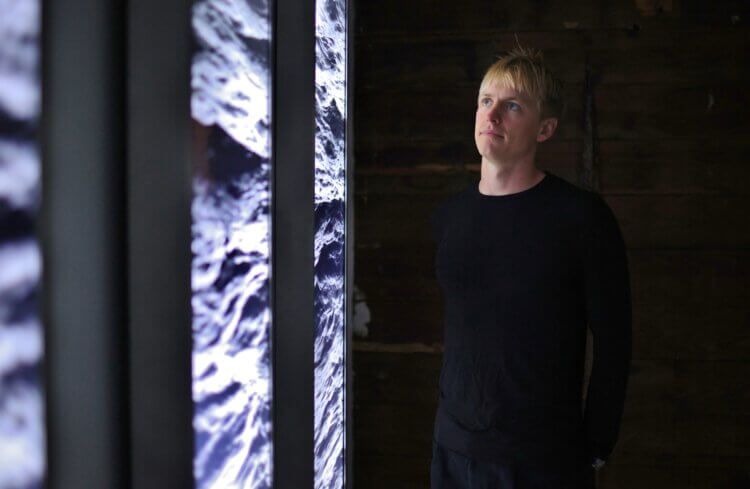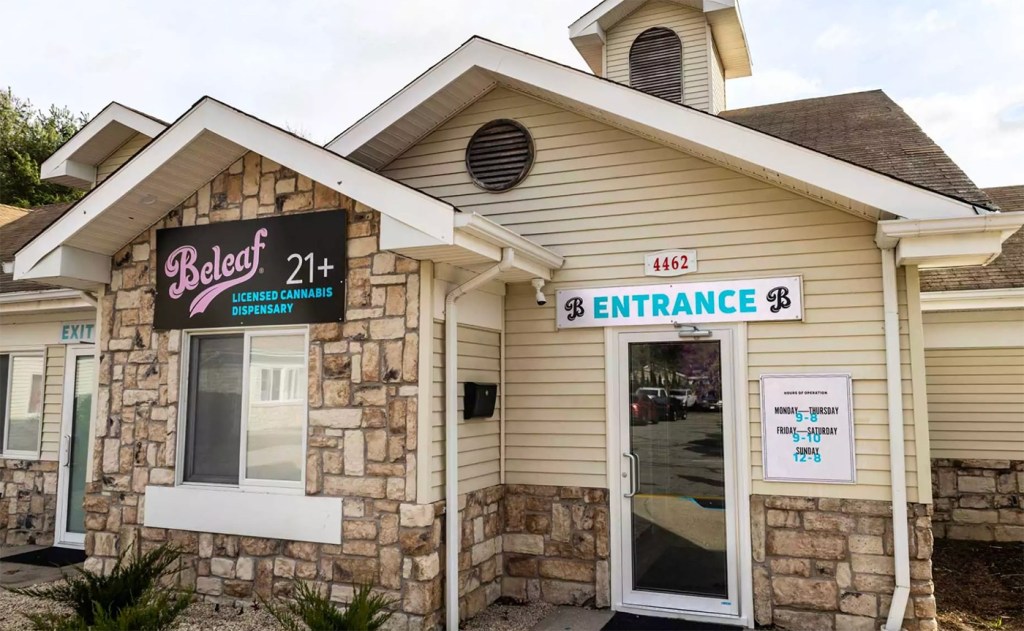Master Craftsman: Harris Allen and the View Through the Window
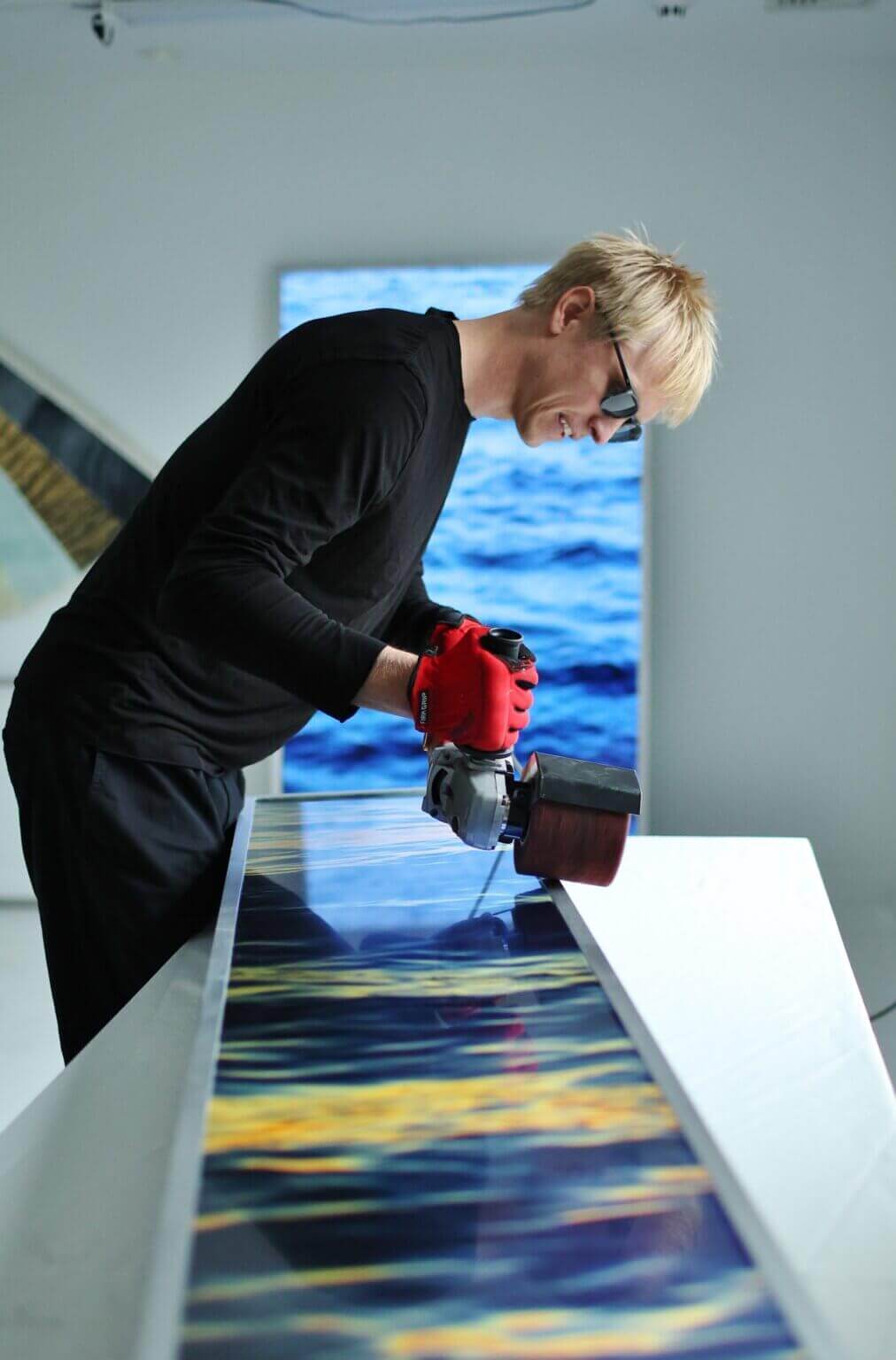
There’s a relaxed, positive energy emanating from Harris Allen’s art. But once you’ve spent a little time with it, it feels like an oversimplification to describe what you’re seeing as simply soothing or peaceful.
There’s something else – something uniquely visceral – about standing in front of Allen’s oversized video panels, their frames filled with undulating water, slowed down and displayed in segments that sometimes extend for hours before almost imperceptibly looping back on themselves.
Allen attributes the feel-good vibrations his art elicits at least partially to the concept of “biophilia,” a term coined by the psychoanalyst Erich Fromm and later used by the naturalist Edward O. Wilson to describe humanity’s innate tendency to be drawn to nature and to feel an affinity and love for the natural world.
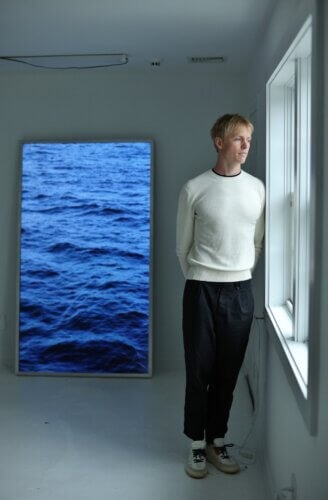
Most human beings get to experience the warm embrace of biophilia all the time. Think of walking on a bay beach at dawn. Or just walking down your driveway as the leaves change color on an October morning. But Allen’s intent is for his art to move beyond the biophilic, tranquil reactions typically associated with the seascapes he presents on video – to create a more thoughtful and rounded experience for the viewer.
In This is a Window, his most recent exhibition, he challenges his audience to think differently about video as a presentation medium, particularly when its subject is the natural world.
“Video is my language,” he says. “It was my best friend going up. I was an only child. I stayed at home a lot and I just played with my camera. I’ve learned that that’s how I speak.”
While the idea of video as a window into a specific world isn’t necessarily new, Allen’s art approaches it from a uniquely meta-perspective. In his work, the medium announces itself boldly, but at the same time fades far enough into the background to change the experience of what it means to watch television.
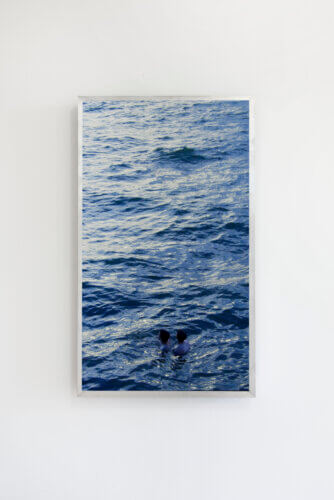
“The best way to show a natural subject in my language is to constrict the elements that immediately say to people, ‘Oh, I’m looking at a TV,’” he explains.
“A lot of my pieces are uniquely shaped to look like windows that are showing nature, but in a digital medium. I have to be very conscious about how I do that. There’s an irony there, a conflict.”
“Waterplace,” one of Allen’s most striking pieces, is a three-panel display measuring a total of 85 inches high and 65 inches wide mounted in a brushed aluminum frame. The black-and-white footage was shot in Sag Harbor Bay, near the artist’s home.
Allen slowed down the movement of the undulating water to a speed he describes as, “the sweet spot – something that’s appropriate for the texture and the scale of the subject.” He adds that the reduction in speed should be, “something noticeable, but not overpowering – always slower than what we might experience live.”
The work embodies a number of Allen’s most prevalent thematic elements. For example, he often works in black and white for a specific reason.
“When people are asked to describe water, the first word they tend to use is ‘blue,’” he says. “To me, the thing that says ‘water’ first is not color. It’s the motion and the texture. I’m fixing your perspective on this unique frame, but I’m also saying that before you focus on color, focus on these other things first.”
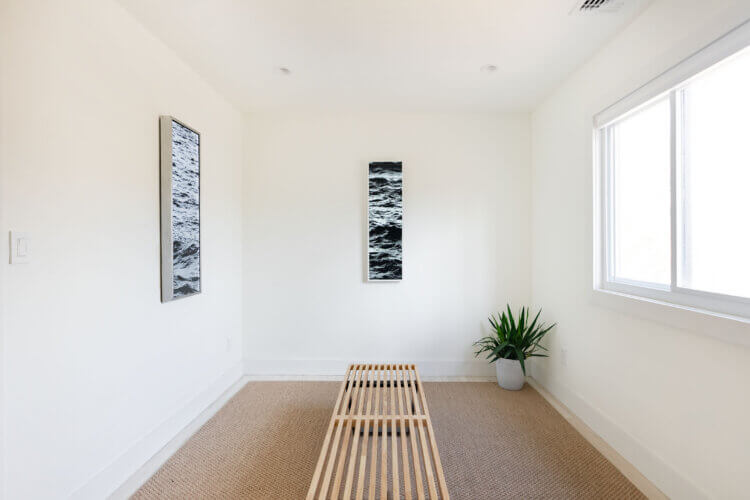
Another predominant theme in Allen’s work – the inherent contradictions of digital video as a window into nature – also fully informs “Waterplace.”
“The space in between the panels is nearly as important as the water that you’re actually seeing,” he explains. You have this reference point. When a bird flies into the frame or a wave crashes, they go right through the wall on which the piece is hanging, so you get this natural window element.”
Where the raw footage that ultimately became “Waterplace” was shot is also extremely evocative of much of Allen’s work. At his recently opened studio on Butter Lane in Bridgehampton, which he shares with the artist Scott Bluedorn, the vast majority of the pieces on display consist of video shot in and around the Long Island Sound and the bays of the East End – particularly Sag Harbor Bay near Morton Wildlife Preserve, where “Waterplace” was created.
Given the photogenic nature of the Atlantic Ocean and the easy access to its beaches at countless spots up and down the South Fork, it’s notable that Allen chooses to focus almost exclusively on local bays. Allen cites a litany of reasons – some artistic, some utilitarian – for his choice.
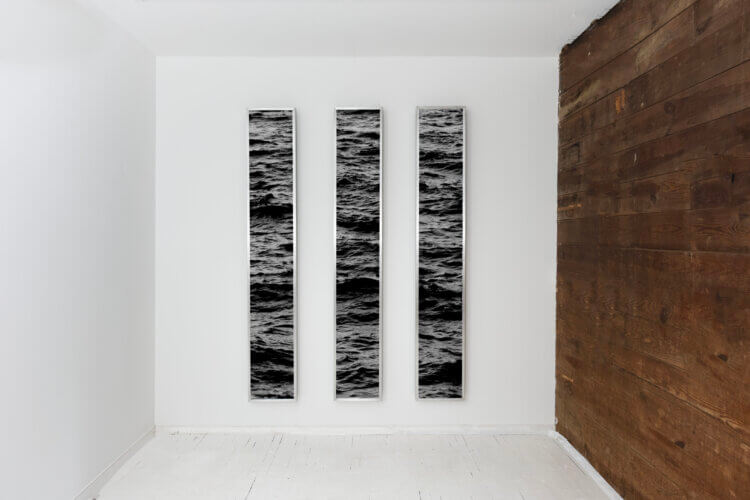
“I love the ocean, but my intrigue lies in the bay,” he says. “Over time, I’ve come to see my work as a meditation. I shoot the same water and I capture its variation. I see it as a study in the variation of one body of water over time. The bay can look like a bathtub or it can look like the ocean on its roughest day. It’s so variable and it’s so infinite.”
Allen notes that he’s constantly asked why he shoots the waters of the bays almost exclusively when a perfectly good ocean is never more than a few miles away. In fact, he’s asked the question often enough that he actually made a list explaining the more practical aspects of his choice.
The list includes proximity (he lives very near Sag Harbor Bay); vivid sunsets; good shellfishing (particularly clamming); fewer insects; clean water and more responsiveness to changes in air temperature (he enjoys polar plunges in cold months).
Allen, 28, has only lived in the area full-time since 2019. He grew up in the rural midwest, outside Springfield, Illinois. “My bus ride to school was 20 minutes through cornfields,” he says.
He spent the majority of his high school years at a military-based boarding school in Culver, Indiana, an even more rural setting. Unlike some young artists, Allen embraced the school’s rigorous disciplinary ethos. “It was foundational,” he explains. “There’s freedom among the constraints. I still write SOPs [standard operating procedures] for my life today.”
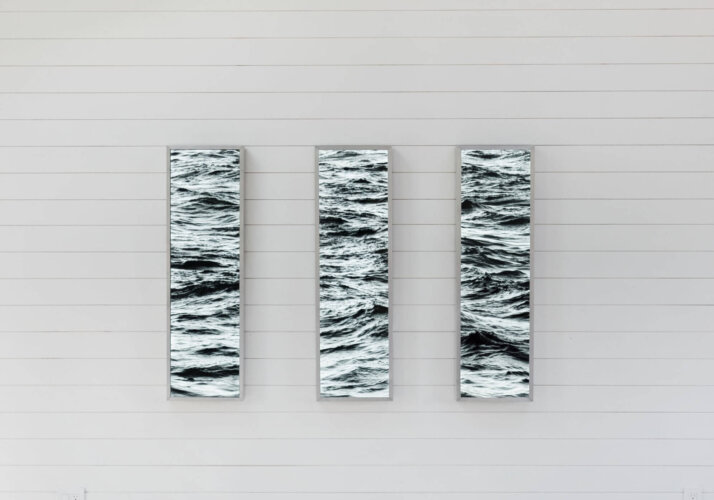
After boarding school, Allen attended college at Boston University, where he got his first extended taste of city life. While he continued shooting video throughout his college career, he chose not to major in video or film production or pursue additional formal training in his art form. “Because I had been shooting video since I was a kid, I didn’t want to kill something I was genuinely passionate about,” he says. “I didn’t want to go back and start from 101.”
After college, Allen spent three years in New York City, making a living shooting commercial videos. Around 2016, he began coming fairly regularly to Sag Harbor, where a good friend of his had grown up. Occasional visits gradually turned into more frequent ones until the artist ultimately became a full-time resident.
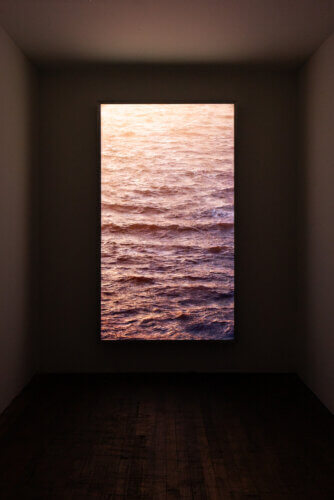
“There’s a wide array of perspectives on the East End, and they often vary because of people’s introduction to a place,” he opines. “How did you come out for the first time? What was your connection? Did you have a share house on weekends? Did you know some locals? Maybe you rented an Airbnb or were invited to a party on the beach. That all sets a frame. My frame was a really down-to-earth local family with a second mother who let me stay in her house while I learned to love this place.”
Allen may have spent his formative years in a landlocked part of the country, far away from the bays of the South Fork. But his work certainly evokes East End life.
“The water is everyone’s muse,” he says. “It’s generational.”
This article appeared in Behind The Hedges issue on Oct. 6, 2023. Read the full digital edition here. Be sure to check out more Master Craftsman articles.
